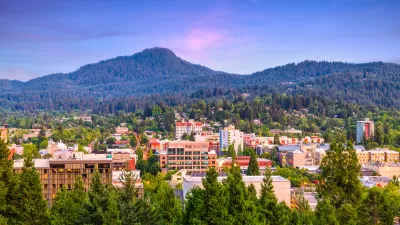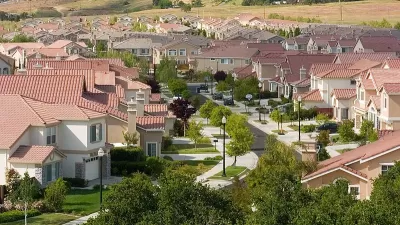The Home in Tacoma plan would amend the city's zoning code to include more 'missing middle' housing types and encourage infill development.

"With the official passage of Home in Tacoma in December 2021, the City of Tacoma is finally making moves towards Phase Two: implementation," writes Kevin Le. The initiative was designed to increase flexibility in housing construction, boost construction of 'missing middle housing,' and improve affordability.
"This would be accomplished through rezoning much of the existing single household zoning, which composes about 75% of Tacoma’s residential land. It would also allow homeowners and property developers to modify existing single household homes into multi-unit dwellings (duplexes, triplexes, and the like) or completely replace them with small apartment buildings up to 3 or 4 stories tall, depending on the location," the article states.
"In the Home in Tacoma Scope Report published in mid-March, it’s noted that the City wants to shift away from housing types like single household homes and focus more on building form, design and scale. This would present Tacoma residents with a range of housing options beyond the generic cookie cutter housing quickly built up by non-local developers."
The Scope Report outlines specific housing goals, including "Zoning capacity to accommodate up to 60,000 new units" and "Accommodate 80% of the City’s new housing units in and within walking distance of Centers." According to Le, the city is also working on an anti-displacement strategy and other tools to boost affordability and prevent evictions and displacement caused by rising rents and mortgages.
FULL STORY: Home in Tacoma Plan to Revamp Neighborhoods Moves into Implementation

Maui's Vacation Rental Debate Turns Ugly
Verbal attacks, misinformation campaigns and fistfights plague a high-stakes debate to convert thousands of vacation rentals into long-term housing.

Planetizen Federal Action Tracker
A weekly monitor of how Trump’s orders and actions are impacting planners and planning in America.

San Francisco Suspends Traffic Calming Amidst Record Deaths
Citing “a challenging fiscal landscape,” the city will cease the program on the heels of 42 traffic deaths, including 24 pedestrians.

Defunct Pittsburgh Power Plant to Become Residential Tower
A decommissioned steam heat plant will be redeveloped into almost 100 affordable housing units.

Trump Prompts Restructuring of Transportation Research Board in “Unprecedented Overreach”
The TRB has eliminated more than half of its committees including those focused on climate, equity, and cities.

Amtrak Rolls Out New Orleans to Alabama “Mardi Gras” Train
The new service will operate morning and evening departures between Mobile and New Orleans.
Urban Design for Planners 1: Software Tools
This six-course series explores essential urban design concepts using open source software and equips planners with the tools they need to participate fully in the urban design process.
Planning for Universal Design
Learn the tools for implementing Universal Design in planning regulations.
Heyer Gruel & Associates PA
JM Goldson LLC
Custer County Colorado
City of Camden Redevelopment Agency
City of Astoria
Transportation Research & Education Center (TREC) at Portland State University
Jefferson Parish Government
Camden Redevelopment Agency
City of Claremont





























